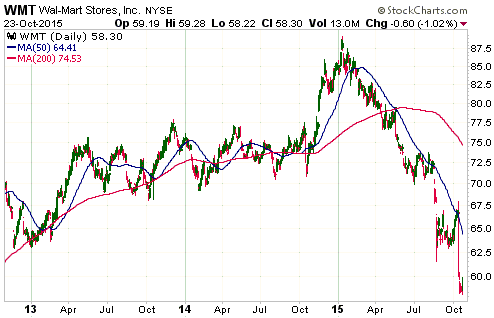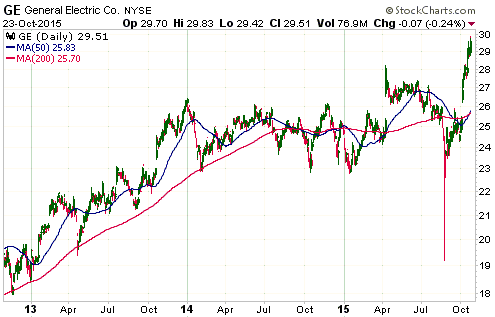It is always possible to find evidence to support any market opinion. If you want to find evidence to support a bearish view, you will be able to find it. If you want to find evidence to support a bullish view, you will be able to find it. If it’s evidence of an impending economic collapse or financial crisis you desire, if you look hard enough you will be able to find it. At the same time you will be able to find evidence that the financial/economic future is bright, if that’s what you really want.
For example, someone wanting to paint a bearish picture of the US economy and stock market could choose to single-out the performance of Wal-Mart (WMT).
Whereas someone wanting to paint a bullish picture of the US economy and stock market could choose to focus on General Electric (GE).
This year’s performances of WMT and GE largely reflect company-specific issues, but they can still be used to support opposing overall-market views.
The point is that there are always two sides to any market. Regardless of your current view, you can be sure that there are many people who are just as smart or smarter than you who have the opposite view. You should therefore always entertain the possibility that your current outlook is wrong and be wary of commentators who only present one side of the story.
Also, it is important to recognise and account for your own biases. One way to do this is to go out of your way to read the analyses of people whose views contradict your own. For example, if, like me, you tend to be too bearish on the US stock market, then you should spend at least as much time reading bullish stock-market commentary as you spend reading bearish stock-market commentary.
In general, there’s nothing to be gained by fixating on market analysis that confirms what you already think you know.
 Print This Post
Print This Post


